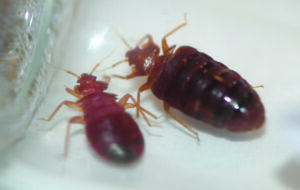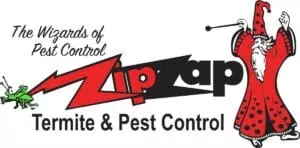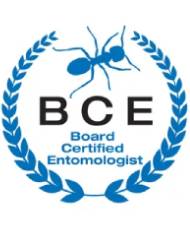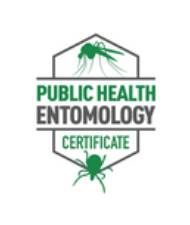How Long Does It Take to Get Rid of Bed Bugs?

Dealing with a bed bug infestation can be stressful and time-consuming. If you ask, “How long does it take to get rid of bed bugs?”—you’re not alone. Bed bugs are resilient pests that can quickly take over a home, but they can be eliminated with the proper treatment. Let’s explore the key factors determining the duration of bed bug treatment and what you can do to get rid of these pests for good.
Understanding Bed Bug Infestations
Bed bugs are small, flat insects that feed on the blood of humans and animals. They typically hide in mattresses, box springs, and other furniture, coming out at night to feed. Bed bugs multiply quickly, and even a small infestation can become a more significant problem in weeks.
Signs of a bed bug infestation include:
- Itchy, red bites, especially in a line or cluster.
- Dark spots or stains on bedding from bed bug feces.
- Bed bug shells or eggs in mattress seams, bed frames, or furniture.
- There is a musty odor in the room where they are hiding.
Once bed bugs are inside your home, they are challenging to eliminate without professional help. That’s why acting quickly at the first sign of an infestation is essential.
Factors That Affect Bed Bug Treatment Duration
The time it takes to get rid of bed bugs can vary. Several factors come into play when determining how long treatment will take, including:
- Size of the Infestation
Larger infestations will naturally take longer to treat. If bed bugs have spread to multiple rooms or pieces of furniture, it may take more time and multiple treatments to eliminate them fully. - Type of Treatment
Different treatment methods have varying timelines. For example, heat treatments and fumigation for bed bugs can often kill bed bugs in one session, while product treatments may require follow-up visits. - Preparation by the Homeowner
Proper preparation before treatment can help speed up the process. Homeowners may need to remove clutter, wash bedding, and vacuum thoroughly before treatment begins. - Reinfestation Risk
If bed bugs are not entirely eliminated or if they are brought back into the home, treatment may need to be repeated. Working with an experienced pest control company reduces the risk of re-infestation.
Professional Bed Bug Treatment Methods
A few main types of professional bed bug treatments are available, and each has its own timeline for success.
- Fumigation using Vikane Gas
- Vikane gas fumigation is a highly effective method for eliminating bed bugs. This treatment involves sealing off the infested area, such as a home or apartment, and introducing Vikane gas. The gas penetrates deeply into cracks, crevices, and furniture, reaching even the most minor hiding places where bed bugs may reside.
- Why Vikane Gas is the Best Option:
- Thorough Penetration: Vikane gas can reach areas that traditional sprays or dusts may miss, ensuring complete coverage and eradication.
- Kills All Life Stages: Vikane gas is effective against all stages of the bed bug life cycle, including eggs, nymphs, and adults.
- Minimal Disruption: While fumigation requires temporary relocation, it can often be completed in a single day, minimizing inconvenience.
- Vikane Gas is Safe for Most Items: Vikane gas is generally safe for most household items, including electronics, fabrics, and furniture.
- No Residual Effects: Unlike some other treatments, Vikane gas does not leave behind any harmful residue or odor.
- If you’re dealing with a bed bug infestation, Vikane gas fumigation may be the best solution to eliminate the pests and restore your peace of mind. It’s essential to consult with a professional pest control company to assess your specific situation and determine the most appropriate treatment.
More Treatment Methods
- Heat Treatment
If done correctly, heat treatments are an effective way to eliminate bed bugs. This method involves raising the temperature of the affected area to over 122°F, which kills bed bugs and their eggs. Heat treatments can usually be completed in one day. - Product Treatments
Product treatments use specially formulated pesticides that target bed bugs. Multiple treatments may be necessary to ensure that all the bed bugs and their eggs are killed, and it can take several weeks to see full results. - Cryonite (Cold) Treatment
This method uses liquid carbon dioxide to freeze bed bugs on contact. Like heat treatments, cryonite treatments are fast and effective, but follow-up treatments may still be needed in some cases. - Steam Treatment
Steam treatments use high-temperature steam to penetrate deep into mattresses, carpets, and furniture. This method can kill bed bugs and their eggs, but it is often used in combination with product treatments for the best results.
How Long to Expect for Complete Bed Bug Elimination
The bed bug removal timeline depends on the infestation’s severity and the treatment method used. Generally, bed bug treatments can take anywhere from a few days to weeks.
- For heat treatments: Most infestations can be treated in a single day, with follow-up visits scheduled if necessary.
- Product treatments may take 2-3 weeks to see the full effect, as bed bugs and their eggs may not die immediately.
- For severe infestations, Multiple treatments may be necessary, and the entire process could take up to 4 to 6 weeks.
It’s important to monitor the situation closely and schedule follow-up treatments if any signs of bed bugs remain after the initial treatment.
Tips to Speed Up the Bed Bug Removal Process
While professional treatment is essential to eliminating bed bugs, there are steps you can take to make the process more efficient:
- Declutter your home.
Bed bugs love to hide in clutter. Clear out unnecessary items, especially in bedrooms, to reduce their hiding spots. - Wash and dry linens on high heat.
Launder all bedding, clothing, and curtains in hot water and dry them on the highest setting. This will kill any bed bugs or eggs that may be hiding. - Vacuum regularly.
Vacuum floors, mattresses, and upholstered furniture daily during the treatment process. Be sure to empty the vacuum bag immediately into a sealed plastic bag. - Seal cracks and crevices.
Bed bugs can hide in cracks in walls, baseboards, and furniture. Sealing these areas can help prevent them from moving between rooms.
Preventing Future Bed Bug Infestations
Once bed bugs are gone, it’s essential to take steps to prevent them from coming back. Here are some tips to keep your home bed bug-free:
- Inspect used furniture before bringing it into your home.
Bed bugs are commonly found in secondhand furniture. Thoroughly inspect and clean any used items before bringing them inside. - Be cautious when traveling.
Bed bugs are often picked up in hotels or during travel. Inspect hotel rooms for signs of bed bugs, and keep your luggage off the floor. When you return home, immediately wash your clothing in hot water. - Use protective mattress covers.
Encase your mattresses and box springs in bed bug-proof covers to eliminate potential hiding spots. - Schedule regular inspections.
Have a pest control professional inspect your home regularly to catch any signs of bed bugs early.
Call ZipZap Termite & Pest Control Today!
If you’re dealing with bed bugs, don’t wait to get help. ZipZap Termite & Pest Control in Lawson, MO, offers fast, reliable bed bug treatments that eliminate and keep these pests from returning. Whether it’s a small infestation or a widespread problem, our experienced technicians have the tools and expertise to do the job right. Call us today at (816) 407-7378 to schedule your bed bug inspection and take the first step toward a pest-free home!

Jeffery Preece BCE, PHE
Jeffery Preece is the owner and technical director at ZipZap Termite & Pest Control.



